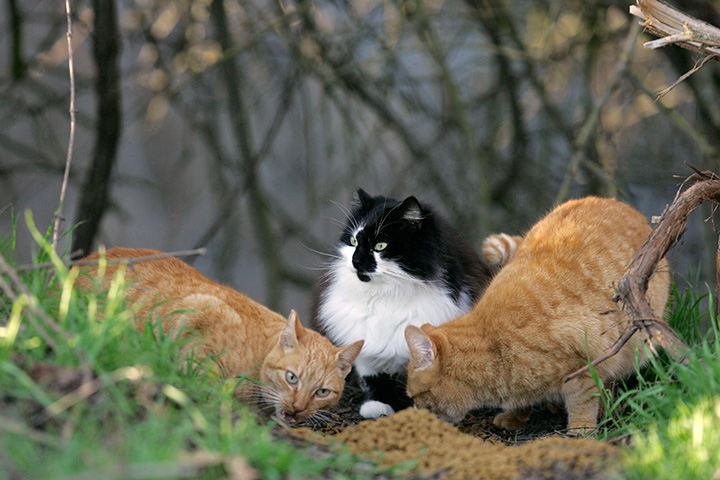A county in southern Ontario is looking for help with thousands of stray and feral cats.

Norfolk County, on the north shore of Lake Erie, has a population of around 65,000 people and, according to the nearest humane society, an estimated 30,000 free-range felines.
In May, the county put out a call for proposals for a cat control program.
Only the Simcoe and District Humane Society (SDHS) responded to the call, but their submission was disqualified when the county determined it was incomplete.
Now Norfolk is hanging on to the $50,000 earmarked for the winning submission, and waiting for a group to come forward with a long-term solution.
READ MORE: 3 pit bulls seized in Ontario to be adopted out by Nova Scotia SPCA
“Like any good program you don’t just do it one year,” said Chris Baird, general manager of Norfolk’s development and cultural services department. “You have to do it over successive years or make it part of an ongoing operation.”
Animal welfare groups make a distinction between stray cats, which are domesticated pets who have wandered away from home, and feral cats, who were born in the wild or have lived in the wild for a long period of time.
Feral cats will often form colonies that can number well over 100-strong.
And while there are volunteer “colony managers” who feed or provide shelter for these packs, finding permanent homes for feral cats is not really an option.
“Trying to domesticate a feral cat is nearly impossible because they have been roaming free their whole life, and if you try to confine them it creates quite a stressful environment for them,” said Alison Cross, a spokeswoman for the Ontario SPCA.
The OSPCA says the only “economically viable and truly humane” way to manage feral populations is to trap them, have them spayed or neutered, and then release them back into the wild.
The agency loans out cage traps for volunteers to capture homeless cats and bring them in for spaying or neutering. It also works with a Toronto organization to offer training on how to care for feral cats as a colony manager.
READ MORE: WATCH: Man breaks BMW window to free dog on hot day in southern Ontario
Feral cat colony managers have to pay out of pocket for the animals’ food and veterinary bills, but the OSPCA does run a food bank of cat food that has been donated to them.
Cross called it a natural way to decrease feral cat numbers.
“We just let nature take its course, but we can assist it by reducing the number of litters produced each year,” she said.
Cathie Hosken, of the Simcoe and District Humane Society, said her organization deals with feral cat colonies all the time and receives 200 to 300 calls per month reporting large groups of cats.
“When we get calls, it’s not about five animals that need housing because their owner has passed away,” she added. “Our calls are for (groups of) 27, 35, 68.”
READ MORE: Nova Scotia SPCA program reduces Halifax cat colony populations
When there is room at the shelter, they take in some cats, she added.
But she said her agency is a strong proponent of the trap, neuter and release method, and tries to help people in the Norfolk area get stray and feral cats fixed.
Mostly that means helping people find the most affordable option or finding ways to offset the cost, especially for people looking after large numbers of cats, said Hosken.
Spaying or neutering costs $60 at the OSPCA.
Hosken said the SDHS is still interested in helping Norfolk County with its preponderance of stray and feral cats, but would not comment on any future proposals that might be in the works.
- Nurse practitioner fees could ‘undermine’ Ontario public health investment: minister
- UP Express stops in Toronto reduced as Metrolinx shakes up GO train service
- Driver missing in Ontario after police say vehicle was pulled into creek
- Toronto carjackings: 3 people face 54 charges in latest auto theft probe



Comments